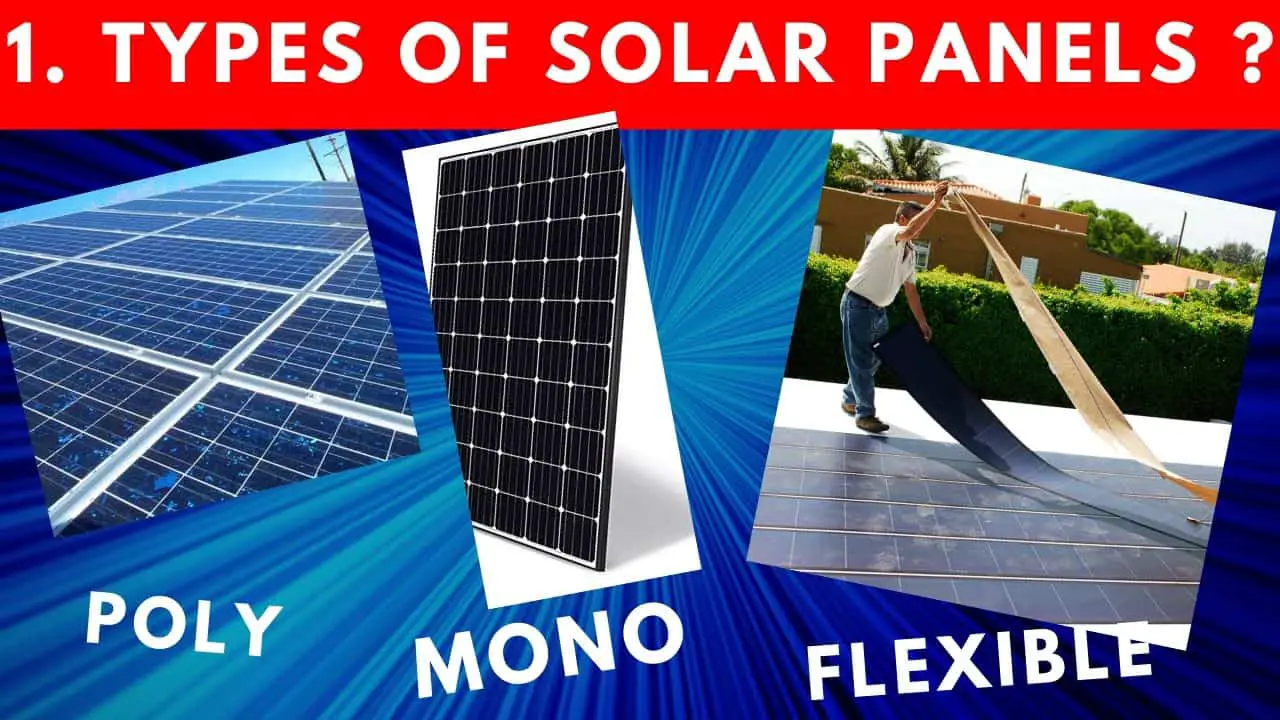The Main Principles Of Solar Systems
Wiki Article
Solar Systems Fundamentals Explained
Table of ContentsThe Buzz on Solar SystemsThe Best Strategy To Use For Solar SystemsThe Only Guide to Solar SystemsSolar Systems - Questions
There are 3 different sorts of photovoltaic panels: monocrystalline, polycrystalline, as well as slim movie. Monocrystalline solar panels are extremely reliable and have a smooth layout, but come with a greater cost factor than various other photovoltaic panels. Polycrystalline photovoltaic panels are cheaper than monocrystalline panels, however, they are less reliable as well as aren't as aesthetically pleasing.Nowadays, there are several selections of monocrystalline photovoltaic panels on the market to select from. Passivated Emitter as well as Rear Contact cells, even more commonly referred to as PERC cells, are coming to be an increasingly prominent monocrystalline alternative. PERC cells go via a various manufacturing and assembly process that raises the quantity of power the cells can generate.
Due to the fact that monocrystalline solar cells are constructed from a solitary crystal of silicon, electrons have the ability to quickly stream throughout the cell, raising overall performance. Not only do monocrystalline panels have the highest possible effectiveness scores, they commonly additionally have the highest power capability scores, also. The majority of monocrystalline panels on the marketplace today will certainly have a power outcome rating of at least 320 watts, however can go up to around 375 watts or higher!.
Since polycrystalline cells contain numerous silicon cells, the electrons can stagnate as quickly and also because of this, lower the performance of the panel. The lower effectiveness of polycrystalline panels additionally implies they have a tendency to have a lower power output than monocrystalline panels, normally ranging in between 240 watts and 300 watts.
Facts About Solar Systems Revealed
In order to fulfill your power requires, you would certainly require to mount even more slim movie panels over a huge location to generate the very same quantity of electricity as crystalline silicon solar panels. This is why slim movie solar panels do not actually make feeling for property setups where area is restricted.The temperature level coefficient tells you just how much the power output will decrease by for every single 1 * C over 25 * look at this website C the panel obtains. The standard temperature coefficient for mono and polycrystalline panels typically drops someplace in between -0. 3% as well as -0. 5% per * C. Thin film panels on the other hand, are around -0.
With some thin movie panels, it's difficult to even see the individual cells within the panel. They additionally have a tendency to have less wiring and also busbars, indicating there's less white room. Nevertheless, because they are so ineffective, you would need to cover your whole roofing system in slim film panels - which may or might not be your style.

Some makers have functioned around this with black packaging or shaping the cells in different ways, but these visual changes can influence both the why not find out more cost as well as performance of the panels. In general, monocrystalline panels still look sleek, but they're a little bit a lot more pronounced than thin movie panels. solar systems. The procedure in which polycrystalline solar cells are manufactured creates the cells to have a blue, marbled appearance.
Solar Systems - The Facts
If you're on a limited budget, polycrystalline panels may make more feeling for you. We do not recommend slim movie solar panels for residential setups - their performance as well as resilience do not make the affordable worth it, and it's unlikely you'll have virtually adequate space to install the variety of thin film panels you would need to cover your house power usage.Considering that they are made from check out this site pure silicon, they can be readily determined by their dark black shade. Using pure silicon likewise makes monocrystalline panels one of the most space-efficient and longest-lasting amongst all 3 solar panel types. Nonetheless, this comes with a cost a great deal of silicon is thrown away to produce one monocrystalline cell, occasionally getting to over 50%.

Amorphous silicon panels (A-Si) acquire their name from their shapeless nature. Unlike mono-and polycrystalline solar cells, the silicon is not structured on the molecular level.
8 Easy Facts About Solar Systems Shown
50 $0. 50 $0. 50 Note that these numbers do not include the cost of installation and labor.
This suggests that thin-film panels can be a great choice for hotter settings or places that experience more sunlight throughout the year. The upgraded International Building ordinance of 2012 requires solar panels to match the fire rating of the roofing where they are mounted. This is to ensure that the modules do not speed up the spread of flames in case of a fire.
Report this wiki page